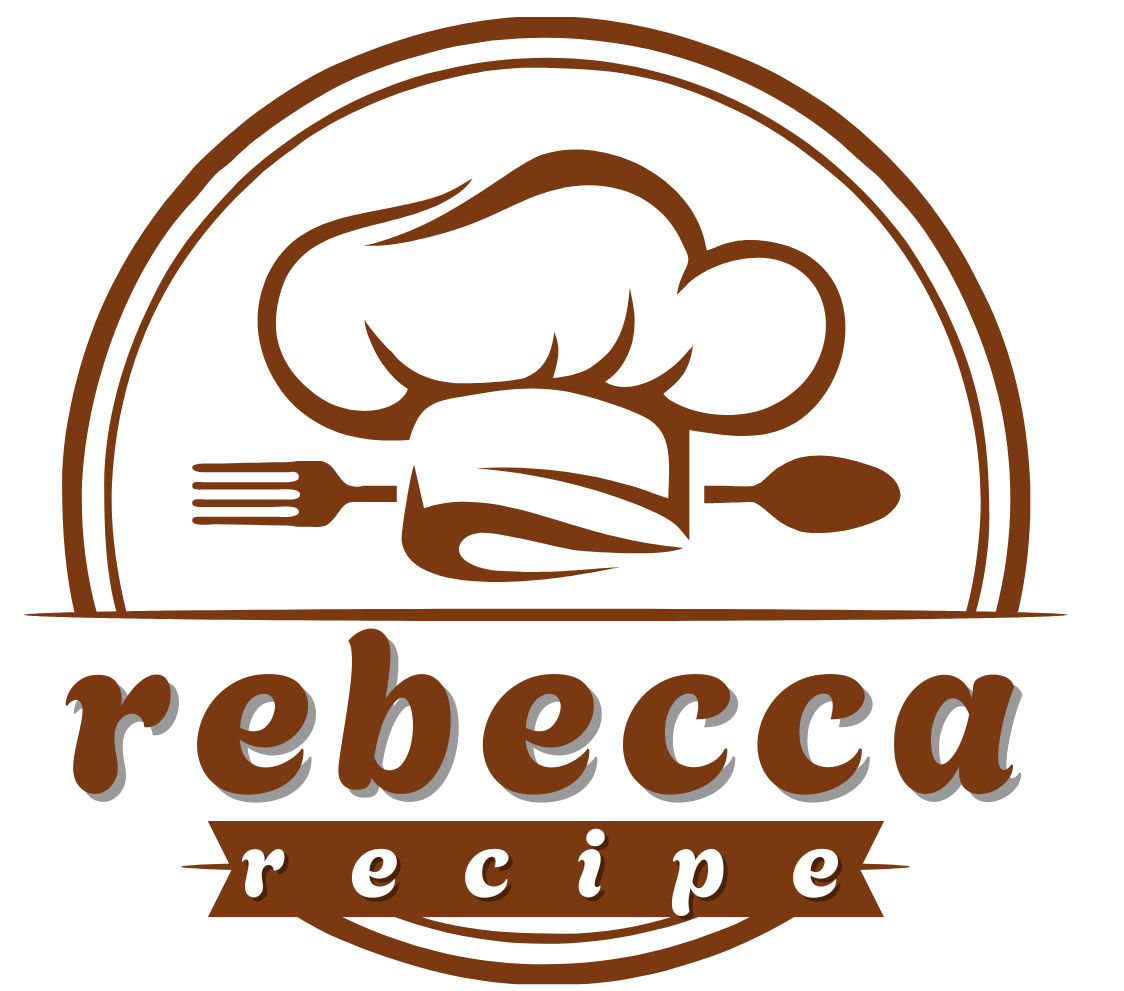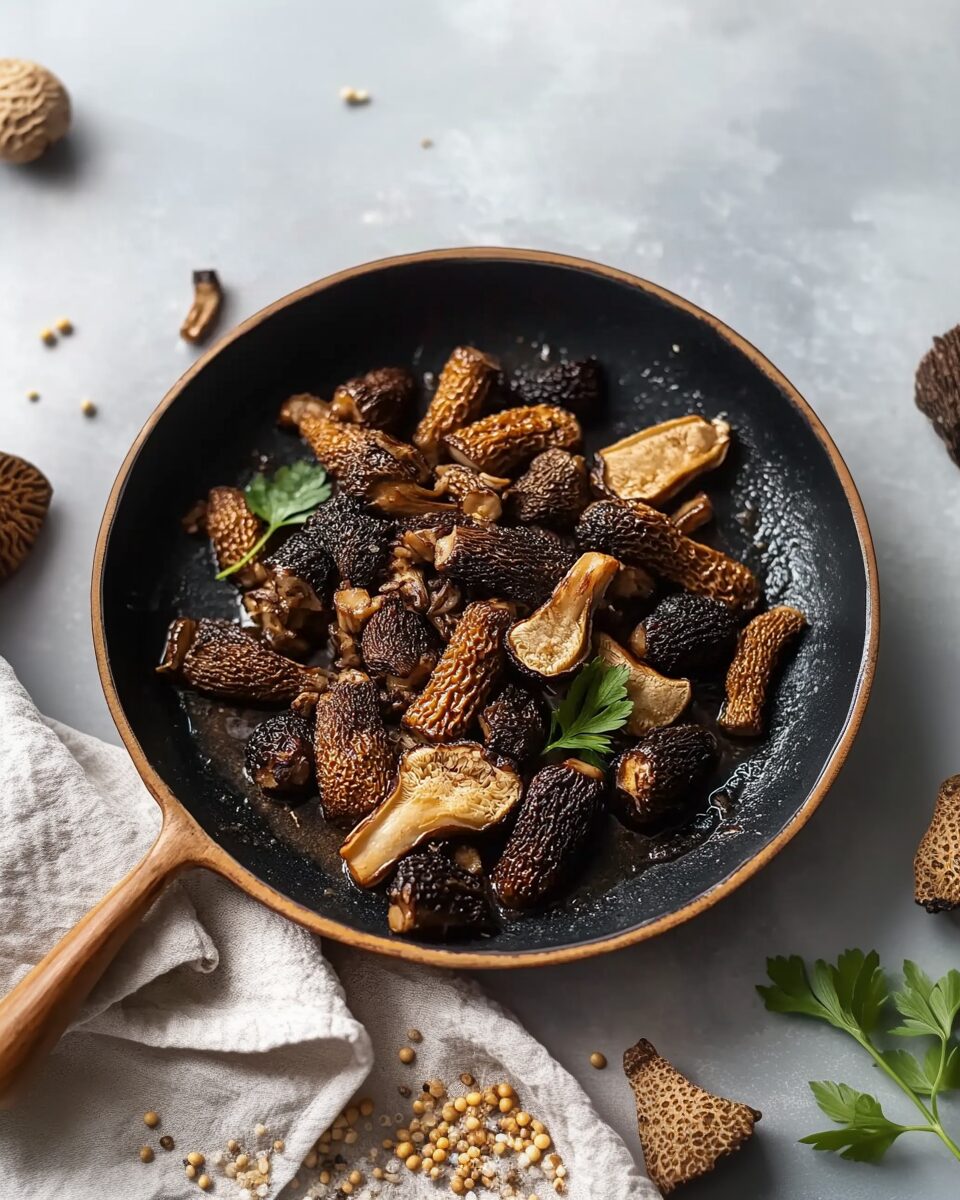Morel mushrooms are a prized delicacy known for their distinctive appearance and rich, earthy flavor. This simple recipe allows the unique taste of fresh morels to shine through by sautéing them in butter and seasoning with sea salt. Enjoy these mushrooms as a side dish or as a complement to various main courses.
Full Recipe:
Ingredients
- 1/2 pound fresh morel mushrooms
- 2 tablespoons unsalted butter
- Sea salt, to taste
Directions
- Prepare the Morels: Fill a large bowl with cool water. Add the morel mushrooms and swish them around to remove any grit.
- Dry the Morels: Using a slotted spoon, lift the morels out of the water and pat them dry with paper towels. Avoid pouring them into a colander, as this can redeposit the removed dirt onto the mushrooms.
- Melt the Butter: Heat a large frying or sauté pan over medium heat. Add the unsalted butter and let it melt completely.
- Sauté the Morels: Once the butter has melted and stopped foaming, add the morel mushrooms to the pan in a single layer. Cook, stirring occasionally, until the morels release their liquid, about 5 minutes.
- Continue Cooking: Adjust the heat to maintain a light sizzle and continue cooking until the liquid has evaporated and the morels are cooked through, approximately 10 minutes.
- Season and Serve: Transfer the sautéed morels to a serving dish and sprinkle with sea salt to taste. Serve immediately as a side dish or accompaniment to your preferred main course.
Nutritional Facts
Per serving (assuming 4 servings):
- Calories: 68
- Total Fat: 6g
- Saturated Fat: 4g
- Cholesterol: 15mg
- Sodium: 203mg
- Total Carbohydrate: 3g
- Dietary Fiber: 2g
- Sugars: 0g
- Protein: 2g
- Vitamin C: 0mg
- Calcium: 26mg
- Iron: 7mg
- Potassium: 235mg
The History and Significance of Morel Mushrooms
Morel mushrooms have a long history of culinary and medicinal use, dating back thousands of years. They have been a part of various traditional dishes in Europe, Asia, and North America, and their popularity has only grown in recent decades as people discover their distinctive characteristics. In ancient times, morels were appreciated for their intense, earthy flavors and were used in a wide variety of recipes, ranging from simple sautés to complex stews and soups.
Aside from their use in cooking, morel mushrooms have also been recognized for their medicinal properties. Some cultures believed that morels could help improve digestion, treat liver ailments, and provide an overall boost to the immune system. While morels have not been extensively studied for their medicinal benefits, they remain a part of various folk remedies due to their believed health-promoting properties.
The Unique Flavor and Texture of Morels
One of the reasons morel mushrooms are so highly valued in the culinary world is their unique flavor profile. Morels have a rich, earthy taste that pairs beautifully with butter, cream, and other delicate ingredients. Their taste is deep and almost nutty, with hints of smokiness that emerge when they are cooked. The texture of morels is equally distinct; their hollow, honeycomb structure gives them a meaty, satisfying bite while still being tender enough to complement a wide range of dishes.
The flavor of morels intensifies when they are sautéed or cooked in fats like butter or olive oil, allowing their natural sweetness to shine through. Morels are often used in sauces, gravies, and soups, where they add depth and complexity to the overall dish. Additionally, they can be added to risottos, pastas, and even scrambled eggs, turning simple recipes into something extraordinary with their earthy depth.
Harvesting Morels
Morel mushrooms are wild-harvested, which makes them particularly valuable in the culinary world. Unlike many other types of mushrooms, morels do not grow in cultivated fields but are found in the wild, typically in forests, near dead trees, or in soil rich with organic matter. Morel mushroom hunters, or “morel foragers,” venture into wooded areas during the spring months, when the mushrooms begin to sprout. They must be careful when foraging because morels are often confused with other, potentially toxic mushrooms that share similar characteristics, making it crucial to properly identify the mushrooms before picking them.
Once harvested, morel mushrooms must be carefully cleaned, as their hollow interior can trap dirt and grit. They should not be submerged in water for cleaning, as their porous nature allows water to seep into the mushroom, which can affect their texture and flavor. Instead, morels should be gently brushed or wiped clean to preserve their quality.
Health Benefits of Morel Mushrooms
While morel mushrooms are most commonly known for their culinary appeal, they also offer a variety of health benefits. These mushrooms are rich in several essential nutrients, including vitamins, minerals, and antioxidants. Morels are a good source of B vitamins, which help support metabolism and energy production in the body. Additionally, they contain small amounts of vitamin D, which is important for bone health and immune system function.
Morels also provide a healthy dose of dietary fiber, which is essential for digestive health. Fiber helps regulate bowel movements, prevent constipation, and maintain a healthy gut microbiome. Moreover, morels contain important minerals such as potassium, calcium, and iron, which contribute to overall health and well-being.
Another notable benefit of morel mushrooms is their antioxidant content. Antioxidants help protect the body from oxidative stress and free radical damage, which can contribute to the aging process and various chronic diseases. The unique compounds found in morels may provide protection against certain conditions, including heart disease and certain cancers.
How to Prepare Morels
Morel mushrooms are versatile and can be used in a variety of dishes. However, because of their delicate nature, it’s important to handle them with care during preparation. After cleaning the morels, they can be sliced in half or left whole, depending on the desired presentation and recipe. Morels can be sautéed, roasted, or added to soups and sauces. The most common method of cooking morels is sautéing them in butter or oil, which allows them to release their rich flavors and textures.
To sauté morels, heat a skillet over medium heat and melt butter or oil in the pan. Add the morel mushrooms and cook them until they have released their moisture and become tender. Season with salt and pepper to taste, and serve immediately. Morels can also be paired with cream, garlic, and fresh herbs, such as thyme or parsley, for additional flavor.
Morels are a popular addition to risottos, where their earthy flavors complement the creamy rice. They can also be added to pasta dishes, gravies, and soups for added depth. Additionally, morel mushrooms pair well with meats such as chicken, pork, and beef, making them a versatile ingredient in many different types of recipes.
Storing Morel Mushrooms
Fresh morel mushrooms are highly perishable and should be used as soon as possible after harvesting. If they need to be stored, it is best to refrigerate them in a paper bag, which will help absorb moisture and prevent them from becoming too soggy. Morel mushrooms should not be stored in plastic bags, as this can cause them to become damp and deteriorate quickly.
If fresh morels are not available, they can also be purchased dried. Dried morels can be rehydrated by soaking them in warm water for about 30 minutes before using them in recipes. While dried morels may not have the same texture as fresh ones, they still retain much of the unique flavor that makes them a prized ingredient.
Morel Mushroom Recipes
Morel mushrooms are used in a variety of dishes, from simple sautés to elaborate gourmet meals. Here are a few popular recipes that showcase the versatility of morels:
-
Morel Mushroom Risotto: A creamy, rich risotto made with sautéed morels, garlic, shallots, and Parmesan cheese. This dish is the perfect way to highlight the deep, earthy flavor of the mushrooms.
-
Morel Mushroom Soup: A silky soup made with a base of cream, stock, and sautéed morels. This dish is warming and comforting, perfect for a cold day.
-
Sautéed Morel Mushrooms: The simplest and most classic way to enjoy morels. Sautéed in butter and seasoned with sea salt, these mushrooms are a delicious side dish or a topping for meats and pastas.
Conclusion
Morel mushrooms are a true delicacy, prized for their unique flavor and texture. Whether you’re a seasoned chef or a home cook, incorporating morels into your dishes will elevate the flavor profile of any meal. Their earthy, nutty taste pairs wonderfully with a variety of ingredients, and their meaty texture makes them a perfect addition to a range of recipes. With their health benefits, versatility, and rich culinary history, morel mushrooms are a must-try ingredient for anyone looking to expand their cooking repertoire.






